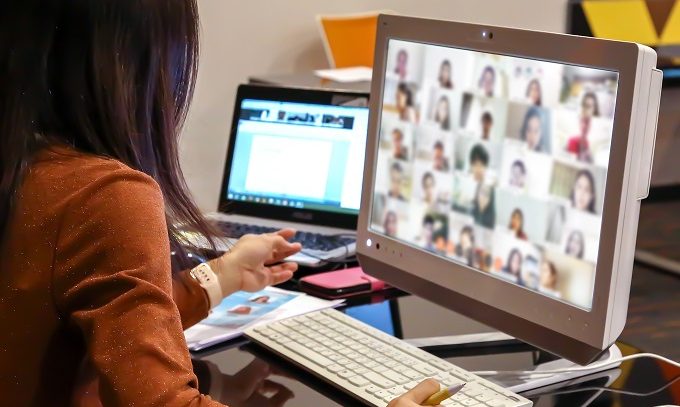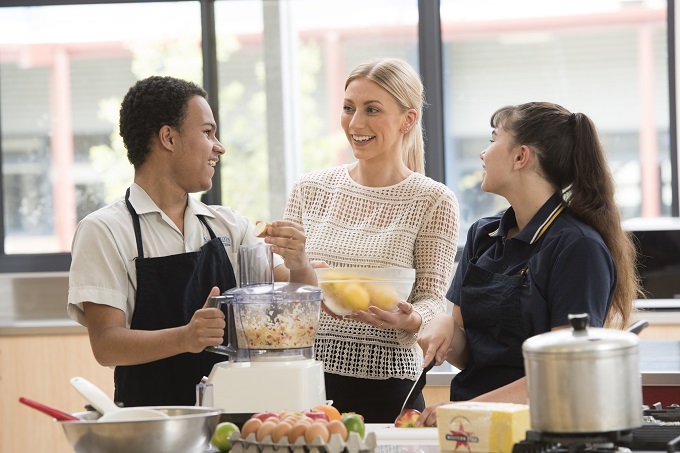8 tips to help exhausted teachers move to online teaching

With Sydney schools moving to home learning once again, and COVID-19’s highly contagious Delta strain making the possibility of other states following in the coming weeks, jaded teachers must adapt their lessons for online delivery. For many teachers, this means juggling classrooms with educating their own children at home.
From my experience working on both sides of the distance education (DE) fence – as a DE teacher at Australian Christian College and helping my son complete school online – here’s some tips for making a successful transition.
In your role as a teacher
1. Be explicit
When you’ve been teaching for a while, it’s easy to take your knowledge for granted. But the people supervising children’s learning at home don’t have an education degree or years of teaching experience. Without your help, they’re relying on what they know from experiences with their own children or talking to others in similar circumstances.
Don’t make any assumptions about the learner or the home supervisor – they might be grandparents or other family members. You’re not there beside them to guide what they’re doing, so you need to be clear from the get-go about every detail. Don’t assume they know they need worksheets and a glue stick for a lesson. Make everything as explicit as possible, including details about the learning environment, the necessary materials and the thinking and strategies you want them to work through. Helping with those practicalities will make things run much more smoothly for the home supervisor and student.
2. Be responsive
Try to be extremely responsive to email or phone communication. When home supervisors are in the thick of things and get stuck, that’s a key opportunity to teach and engage. If it takes you four hours to get back to them, often they’ve moved on. When you then try to get back to that issue, the moment Is lost. I think it’s best to be very responsive to cries for help or more information.
3. Use video
When you can’t be there to see what the student is doing and dialogue with them about their learning, videos are immeasurably helpful. It’s easy to forget how much information teachers gather from observing and interacting in a face-to-face environment. When you’re in an online setting, videos help to replace that. A simple, 20-second phone video can give you so much information.
Videos are great for getting work samples. For example, if you want to see how a student’s writing is going, have them take a short video as they write a sentence. Videos also help you provide feedback. For example, you might create a video offering instant, specific feedback about where a student is missing the mark or didn’t get the right focus on a task. Or you could show them an example of a C grade assessment piece and demonstrate how their work compares.
Videos are ideal for instruction. You can easily create demonstration videos for students. Another option is doing voice-overs in PowerPoint for on-screen teaching that doesn’t need your face on it. Students can use videos to ask you questions.
You can create videos to teach home supervisors how to guide students with particular topics or tasks. For example, you could demonstrate how to work through a math problem or construct a paragraph in an essay.
Teachers sometimes think videos need to be a grand technology production, but simple, clear, short and well-modelled videos are the most effective.
4. Communicate
It’s vital to keep communication flowing back and forth between the teacher, student, and home supervisor. Almost everything else we can readily adapt – like print and online resources – but great communication is key to filling in gaps created by the loss of face-to-face interaction.
For supervising your own children
Needing to supervise your own children’s schoolwork adds another layer of complexity to your job. Here’s some strategies to help, from my own experience and that of others juggling the two commitments.
5. Ensure good supervision
Like many 17-year-olds, our son can find things he enjoys doing more than schoolwork! One of our conditions is that he does schoolwork in his dad’s office so we can monitor his screen. On the days I work from home, he works in his dad’s office in the morning, and does the second half of his day at the table where I’m working. We don’t allow schoolwork to be done in his bedroom, because we know he would get off task.
For parents with younger children, achieving the balance between work and supervising children is harder because they need more micromanaging. You might need to work with one child at a time while the others play.
6. Have a timetable
With the greater intensity of working with children in lower grades, establishing a timetable will help you work out how best to get through everything. You might need to rotate through helping each child with their more challenging subjects while the others play or complete easier work.
Be sure to schedule regular breaks and time for your own work so you can fit everything in and it’s not too overwhelming.
7. Set goals
Students in senior school can be relatively independent – you probably don’t need to be micromanaging every lesson, every day. With our son, we discuss his goals at the beginning of each week and intermittently review his work and assessment tasks. We’re not spoon feeding him but allowing him some independence while still being aware of where his weaknesses are.
Younger children will need smaller goals and more frequent check-ins to ensure they remain on task.
8. Be organised
One thing our successful DE families have in common is strong preparation. Some check what work is coming up for the week and ensure they get organised over the weekend. They’ll print worksheets and organise the necessary resources for the week ahead. Some parents do this the night before and set everything up for the next day.
Especially with primary school children, doing things on the fly doesn’t work. If you’re balancing a job with children doing school at home, it’s an absolute must to get organised the night before at a bare minimum.
Inevitably, there’ll be technology glitches like things refusing to print, scan or upload, and you end up spending 45 minutes doing something that should have taken ten. By that time, your children are swinging from the ceiling fans, so organisation is a huge part of making online education work.
You’ll probably need to read up on what your children are learning and decide how best to operate your day, provide support and check their work. If you don’t do this in advance, I think even the most organised people could tear their hair out with trying to do a job and ensuring multiple primary-school-aged children are on task with learning!
About the author
Felicity Carrett is the Primary Student Services Coordinator at Australian Christian College and has a Bachelor’s Degree in Primary Education and a Graduate Certificate in Visual Arts from Griffith University. On the weekends she potters in her garden and enjoys going on bike rides along the foreshore with her children.







